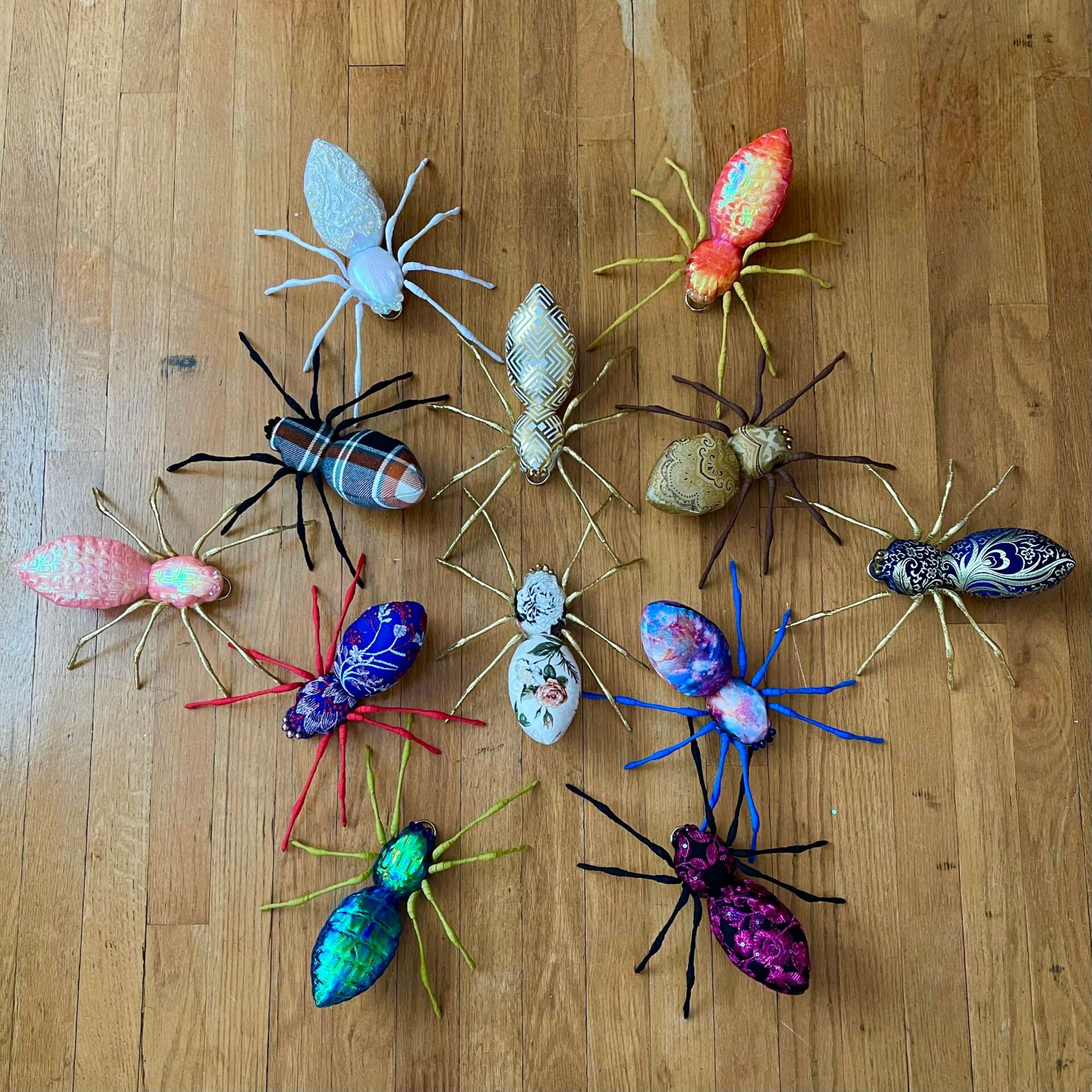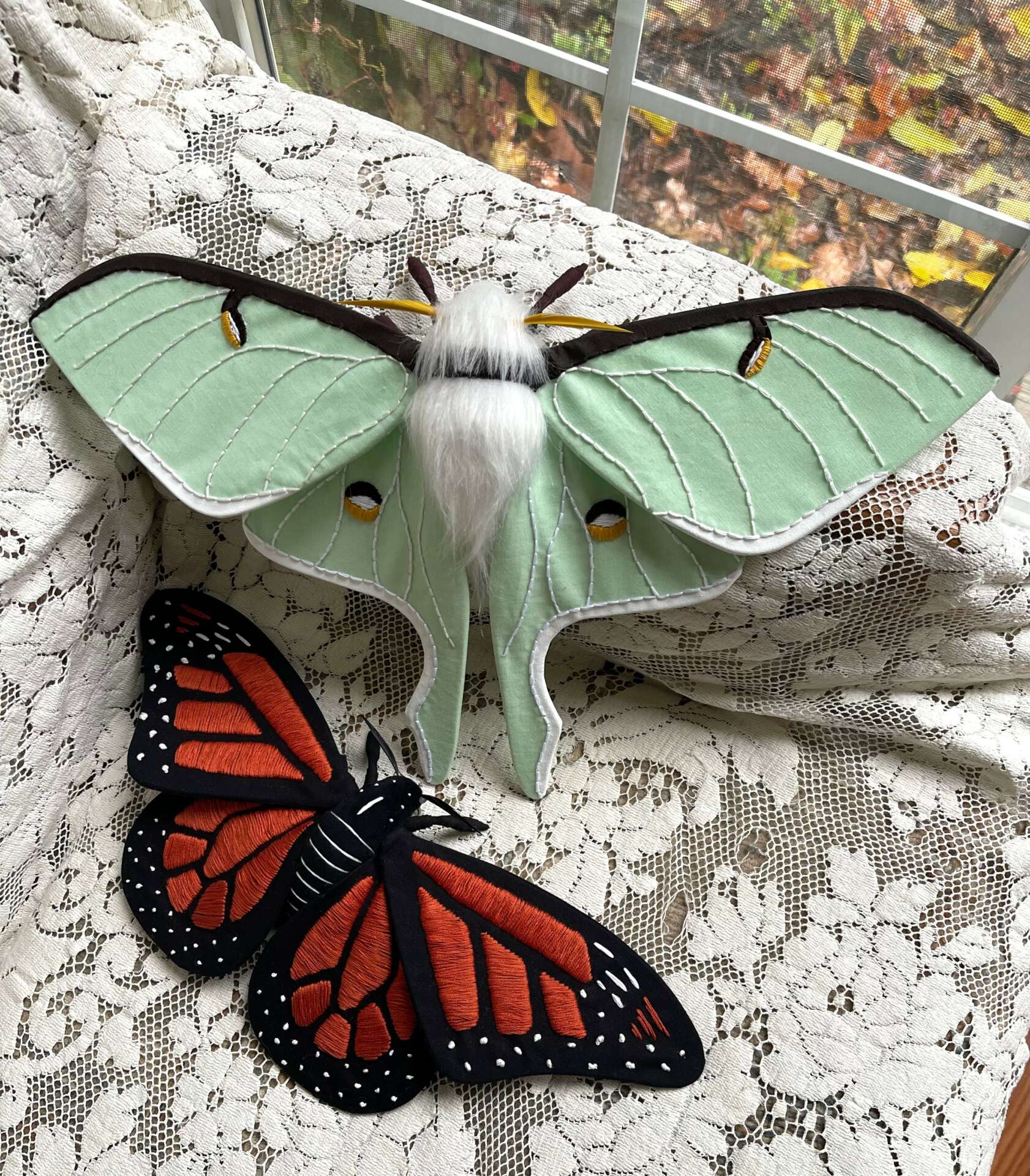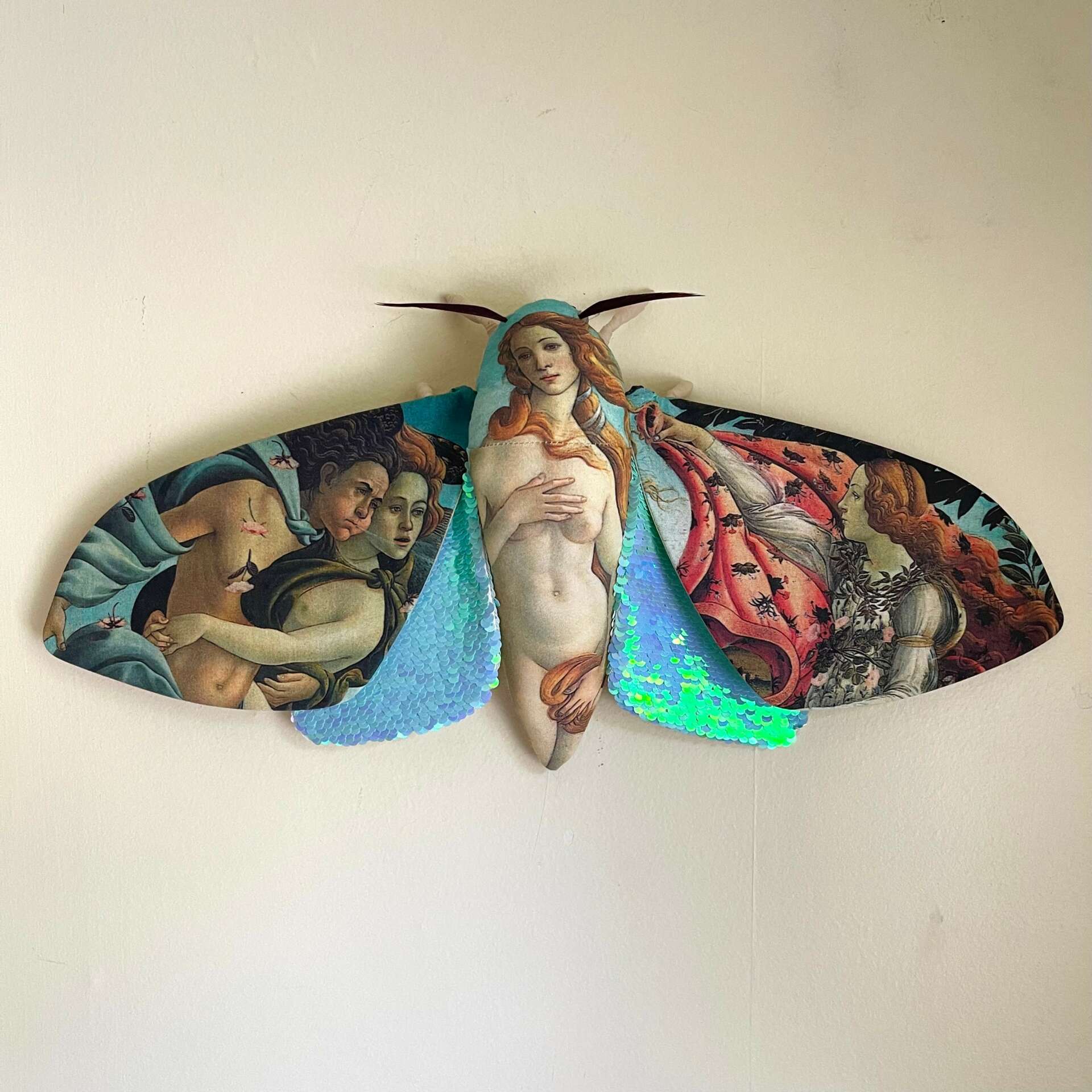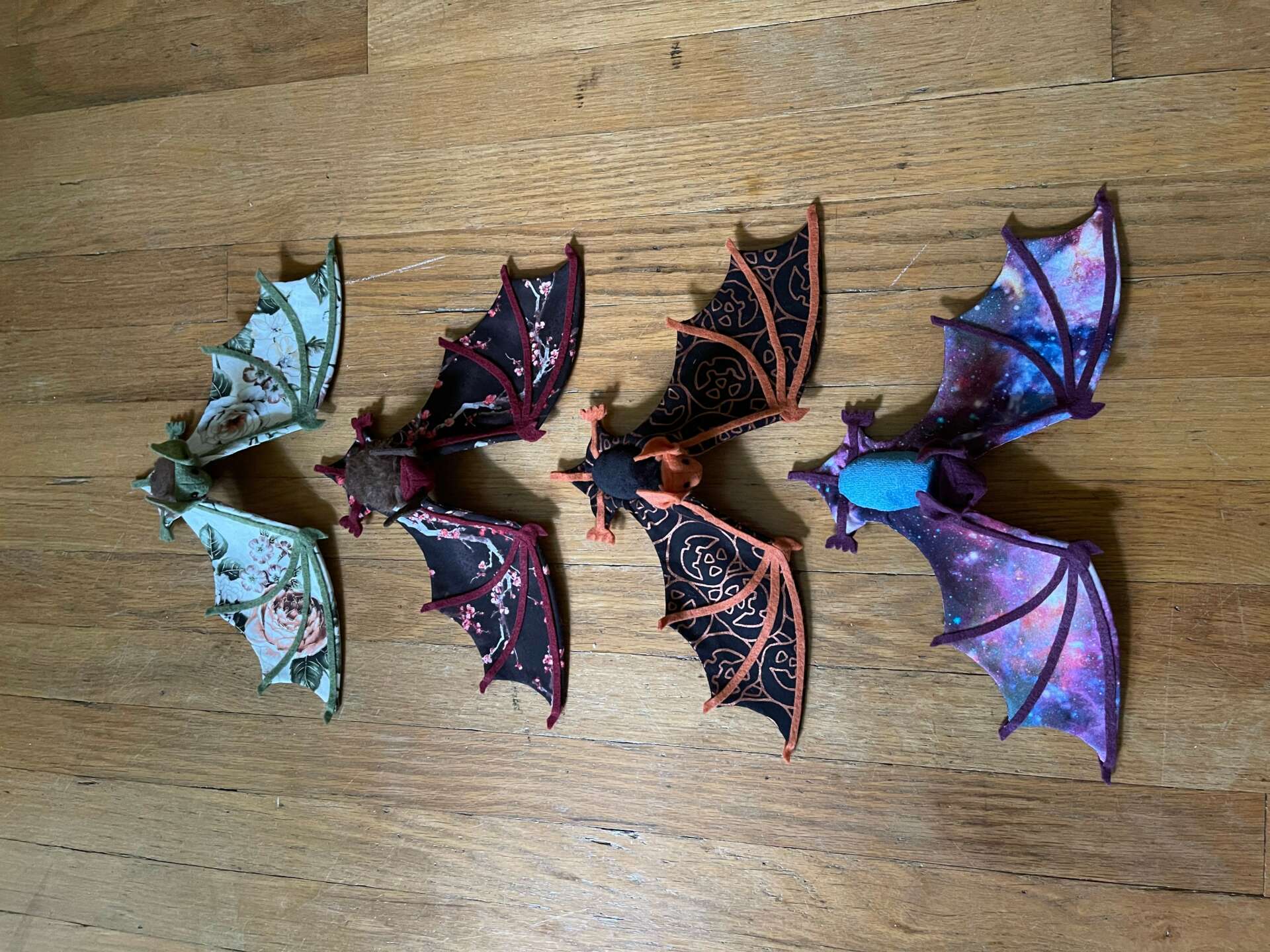We caught up with the brilliant and insightful Molly Burgess a few weeks ago and have shared our conversation below.
Molly, thanks for taking the time to share your stories with us today. We’d love to hear about when you first realized that you wanted to pursue a creative path professionally.
I’ve wanted to be an artist since at least preschool, probably even earlier. I still remember how I visualized myself as a future artist. I always had on a big billowy white smock and jaunty beret. I would be holding an oversized artists palette in one hand and and a paint brush in the other. I also had a thin mustache and goatee. The specificity of this makes me think it was probably cartoon related.
In elementary school my desire to pursue art was even further reinforced when I was diagnosed with dyslexia. Struggling with letters and numbers definitely resulted in me focusing on the one subject I excelled at, art. I was very fortunate to have the parents I had. While they absolutely made sure I knew how to read and do basic math, they knew and understood that art would be the only career path I would be pursuing.




Great, appreciate you sharing that with us. Before we ask you to share more of your insights, can you take a moment to introduce yourself and how you got to where you are today to our readers.
My name is Molly Burgess and I create fabric soft sculptures designed to look like an array of different creatures, mainly insects, but also crustaceans, isopods, and even a few mammals like bats.
While I’ve been an artist my whole life I’ve been a seamstress since 2005. I worked nearly 10 years for an interior designer making mostly window treatments and, light upholstery and bedding. I learned a lot of technical skills, but unfortunately I wasn’t really able to flex my creativity. The job was somehow both stressful and boring. I desperately needed a change. So, in 2014 I left that job and started my life as a full time artist. I was incredibly fortunate to have my partner, Dan. He completely supported my decision to become a full time artist and was comfortable supporting both of us financially while I built my business. Thanks to his encouragement and enthusiasm I was able to pursue my dream and for the past several years I’ve been able to contribute equally to our household.
On a whim, shortly after starting out on my own, I decided I would make a cicada art piece for my bug loving friend, Sarah May. Having been a seamstress for a decade at that point fiber was the medium I was most familiar with, so I figured why not give soft sculpture a try. My first attempt did not go well. In fact I went through a few patterns and prototypes before I finally created one that I was happy with. I loved the process so much I decided to keep it going with different insect species.
Most of what I make can be sorted into two categories, fantastical or natural.
My natural pieces are based on actual species that occur in nature. Monarch butterflies, luna moths, etc. I use paint and embroidery (both by hand and machine) to make these little guys resemble the actual creatures as close as possible. For my fantastical pieces I use the fabric itself as the focal point, as opposed to adding designs to a plain fabric, like with the natural pieces. I use a myriad of different fabric types and prints to make creatures that to fit any designs tastes or styles.
With my fantastical pieces I can let my clients help me design creatures that deeply personal to them. They can pick fabric types (lace, velvet, sequin, tapestry, etc.) and colors. They can also pick patterned fabric in about any theme you could imagine. Inspiration can come from anything from pop culture, literature, fine art, mythology, or even a specific persons personality or style. Just this week I made a moth with soft delicate florals and lace, and another with a haunted house print and sequins.
The majority of my work is done by hand with pins, needles, paint brushes, etc. The only two pieces electrical equipment I use everyday I’ve also had from the beginning of my career. One is my Rowenta iron that was given to me as a wedding gift 12 years ago and the other is a Sears Kenmore sewing machine from the late 1960’s or early 70’s, which was a high school graduation gift from my mother. That machine is a beast and one of the great loves of my life.
My sculptures are a melding of the natural world and the fantastical. Creatures that are clearly recognizable, but undeniably otherworldly. My goal is to create works that are a decadent feast for the senses. Part of the draw of fiber art is that it has the capability of being expressive both visually and through touch. If an individual, when presented with my art, gasps and is uncontrollably drawn forward to pet the furry body, or play with the smooth sequin wings, then I’ve achieved my goal.
What’s the most rewarding aspect of being a creative in your experience?
My work is rewarding for two reasons. First, the more altruistic rewards are definitely the fact that I create pieces that people fall in love with. The feedback I get from my clients and customers is so enthusiastic and positive. It always feel good to make folks happy, not to mention the delightful ego boost. A bit more selfish reward is the freedom of being self employed. There is just no adequate way to describe how much better my life became after I starting my own business. Being in charge of my time, what to make and how to make it is life changing.




We often hear about learning lessons – but just as important is unlearning lessons. Have you ever had to unlearn a lesson?
One lesson I’ve had to unlearn, and in fact have to continually unlearn is that time spent on a project that doesn’t work out is not a waste of time. This is especially true when I’m designing a creature I’ve never made before. This usually happens after I’ve been working on a new pattern for days, pulling my hair out and about to chuck the whole project into the fire. I have to remind myself that it’s okay to stop with this specific pattern and start over from scratch. That something new always takes time and the time spent on patterns that don’t work is not a waste, it’s just part of the process. I generally don’t do a drawing or layout before hand, so the the pattern making process is basically me trying to mentally visualize a 3D puzzle. I never know for sure if it will work when I start and sometimes I can’t tell until I’m nearly finished. Understanding that time spent on failures is actually integral to creating something lovely is a hard and ongoing lesson.
Contact Info:
- Instagram: www.instagram.com/mollyburgessdesigns/
- Facebook: www.facebook.com/MollyBurgessDesigns
- Other: TikTok https://www.tiktok.com/@mollyburgessdesigns
Image Credits
Both pictures of me were taken by Jason DuMond at DuMond Creative


